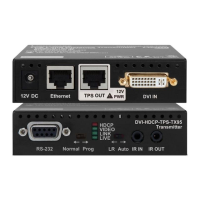
Do you have a question about the Lightware DVI-HDCP-TPS-TX95 and is the answer not in the manual?
| Product Category | Extender |
|---|---|
| Model | DVI-HDCP-TPS-TX95 |
| Manufacturer | Lightware |
| Signal Type | DVI |
| HDCP Support | Yes |
| Max. Resolution | 1920x1200 |
| Input Interface | DVI |
| Transmission Method | TPS |
| Other Features | EDID management |
| Storage Temperature | -20°C to +70°C (-4°F to +158°F) |
Overview of the physical ports and indicators on the transmitter and receiver units.
Configuration of power delivery between transmitter and receiver units using jumper settings.
Explains how to switch between HDBT, LR, and LPPF modes using the unit's switch.
Details the meaning of the various status LED indicators on the TX and RX units.
Provides a table of supported resolutions and maximum cable lengths for different CATx types.
Describes the Ethernet port's functionality and connectivity for data transfer.
Explains the RS-232 serial port connection and configuration for data transmission.
Details the IR emitter and detector connections for remote control signals.
Instructions on how to contact support for firmware updates and files.
Matrix boards force extender TPS link mode settings, overriding the extender's switch.
Diagrams illustrating local and remote powering for TX/RX in standalone configurations.
Diagrams showing local and remote powering for TX/RX within integrated matrix setups.
Illustrates compatibility between 95 series extenders and MX-TPS matrix boards.

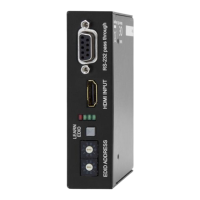
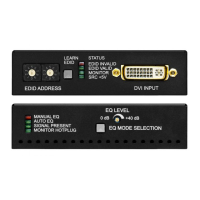

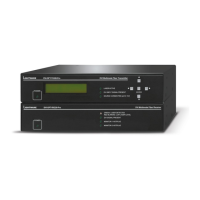

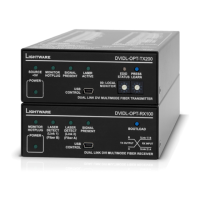
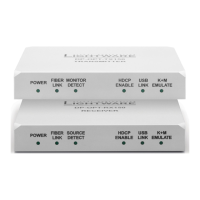
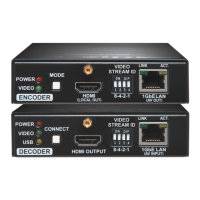
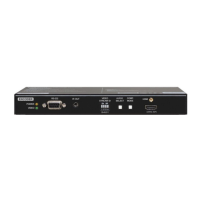
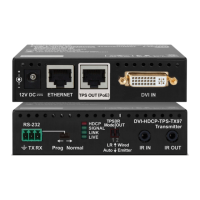
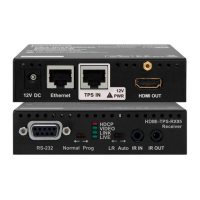
